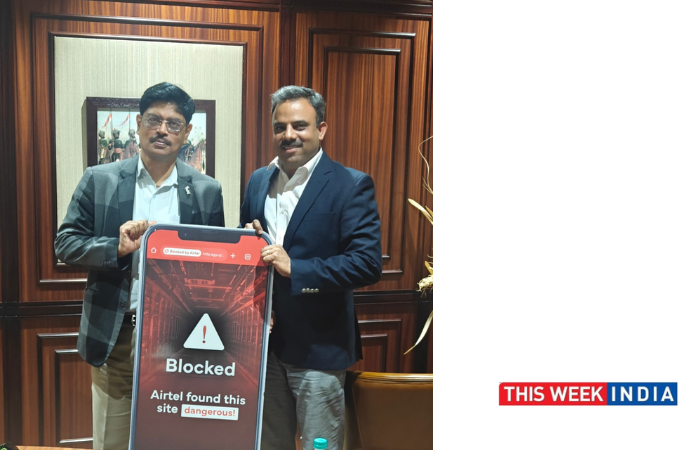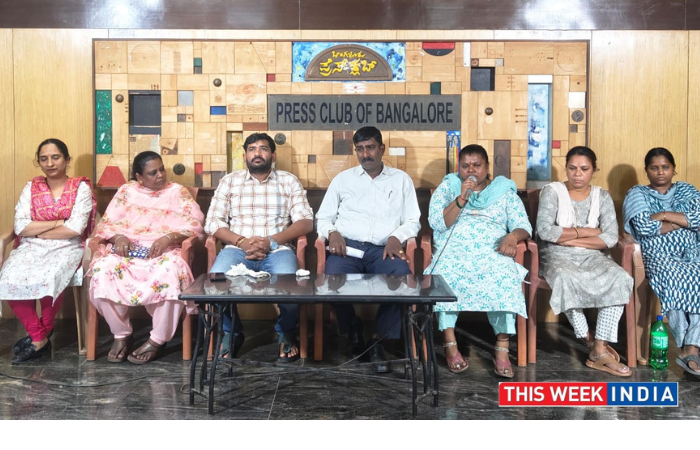Yashoda Hospitals Hyderabad became the first to introduce Bronchoscopic thermal vapour ablation (BTVA) in India and perform 4 surgeries for patients with severe emphysema
Hyderabad, 30th March 2022: Yashoda Hospitals Hyderabad is proud to be the first in India to introduce Bronchoscopic Thermal Vapour Ablation (BTVA), an endoscopic lung volume reduction (ELVR) treatment, which helps to reduce hyperinflation and improve respiratory mechanics in patients with severe emphysema.
An inflammatory response is induced by targeted segmental vapour ablation, which results in tissue and volume decrease in the most diseased emphysematous segments. BTVA so far has been demonstrated to enhance lung function, exercise capacity, and quality of life in patients with upper lobe-predominant emphysema regardless of collateral ventilation in multiple single-arm trials and one multinational randomized controlled trial.
Over the last three months, Dr. V Nagarjuna Maturu, Consultant Pulmonology and Sleep Medicine has performed four surgeries for patients with severe emphysema using BTVA. All the patients are improving after the therapy. This is indeed a new ray of hope for people with severe emphysema who remain symptomatic despite medical management.
“A-65-year old Mr.ND (name changed) was struggling to breathe when he entered my OPD. Over the previous five years, he has complained of increasing dyspnea and cough. He smoked 10-15 cigarettes every day until he was 55 years old. He was already diagnosed with COPD by multiple physicians and his symptoms are worsening even though he is on three different inhalers. He can no longer walk more than 100 steps without panting for air. He inquired as to what else might be done to make his life easier,” says Dr. V Nagarjuna Maturu, Consultant Pulmonology and Sleep Medicine Yashoda Hospitals Hyderabad.
Newer interventions like Bronchoscopic Thermal Vapor ablation will cure such people with severe COPD.
Chronic Obstructive Pulmonary disease is a common respiratory disease affecting adults across India. It is estimated that around 60 million Indians suffer from this illness. COPD kills around 1 million Indians every year, accounting for 10% of all fatalities in the country. Apart from smoking tobacco, COPD is caused by a variety of factors such as industrial dust exposure, biomass fuel exposure, agricultural dust exposure, and past tuberculosis infection.
Emphysema is a subtype of COPD in which the air sacs (alveoli) of the lung get destroyed. Breathlessness and cough are symptoms of emphysema, which worsen over time and eventually render a person disabled. The walls of the alveoli are destroyed in persons who have emphysema. As a result, less oxygen reaches the bloodstream.
The therapy of emphysema starts with avoidance of the factor which caused the disease, tobacco smoking, in most instances. People are prescribed inhalers to slow the progression of the disease and alleviate symptoms. Despite receiving excellent inhaler medication, the condition progresses in many people. Such people lose around 5 – 10% of their lung function every year and grow increasingly sick as time passes. The newest techniques, such as BTVA, are expected to help this group of people.
What is BTVA?
BTVA offers a novel therapy alternative for patients with severe emphysema. The diseased parts of the lung are collapsed/made non-functional in this sort of lung volume reduction operation. As a result of this, the adjacent healthier segments function better.
This also results in a reduction in lung over inflation, making breathing more simpler for the patient. The person’s symptoms improve after the treatment, and their quality of life improves. Lung function improves as a result of the treatment. According to Dr. V. Nagarjuna Maturu, “With BTVA, regulated steam is supplied to the most diseased parts of the lung, resulting in a slow collapse of that segment.”
How is the BTVA procedure performed?
A high-resolution computed tomography (CT) scan of the chest is performed, and the results are evaluated by software to determine which parts/segments of the lung are the most diseased.
BTVA procedure is performed through a bronchoscope. A catheter is directed to the target segment under general anesthesia, and regulated steam is administered to that area. Patients are kept in the hospital overnight after the procedure and then discharged. It takes 2-3 months to show the benefits of the procedure.








